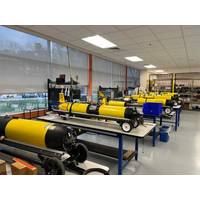
Teledyne Marine: Vehicles Unit Expands Customer Service and Support
Teledyne Marine has announced advancements in customer service and support with investments in facilities, personnel, and global service locations.Key highlights of this expansion include:Enhanced facilities and staff in Kopavogur, IcelandNew AUV Repair Center in North Falmouth, MassachusettsNew Service Center at Teledyne Raymarine in Fareham, EnglandExpansion of the field engineering teamThe demand for marine technology is on the rise, especially for applications in defense, security, oceanographic research, and environmental monitoring. Autonomous Underwater Vehicles (AUVs), gliders, acoustic
NOC Secures £11M for Early Warning Systems
Subpolar Gyre. Through more than £11 million in funding from the UK’s Advanced Research + Invention Agency (ARIA), NOC will lead the development of novel and innovative new ways to detect early warning signs of a change in the Atlantic Subpolar Gyre.Sitting just south of Greenland and Iceland, the Atlantic Subpolar Gyre is a key component of the global ocean’s circulation system, transporting heat around the planet and helping to regulate temperatures in Europe and North America.Its collapse could have a major global impact on our weather, food, and security, but existing climate
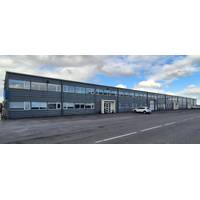
Teledyne Gavia Expands in Iceland
Marine technology company Teledyne Gavia announced it has expanded its engineering and production facilities in Kopavogur, Iceland in response to growing demand for its autonomous underwater vehicles (AUV).The company said it has more than doubled the size of its manufacturing facility and significantly increased its staff in engineering, manufacturing and support roles in response to the increased demand for both low logistics Gavia class systems and the larger Osprey and SeaRaptor AUVs.Teledyne Gavia's facility in Kopavogur, Iceland offers convenient access for in-water testing and easy access
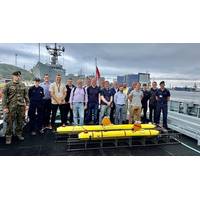
Teledyne GAVIA AUV Service Center Opens in Poland
.Having supported the Polish Navy´s expanding fleet of Gavia AUVs for over a decade, ENAMOR Limited has opened the Service Center in partnership with the Polish Naval Academy.Polish Navy Admirals, Captains and Officers attended the grand opening alongside representatives from Teledyne Gavia in Iceland, Teledyne Marine personnel from the United States and Europe, as well as various NATO partners and Gavia AUV Users.The Polish Navy’s initial acquisition of Gavia AUVs in 2013 was facilitated through a contract secured by ENAMOR Limited. Following the delivery, the Polish Navy received guidance
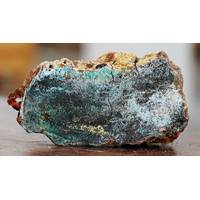
EXPLAINER-Why Does Norway Want to Mine the Seabed?
green groups, such as the World Wildlife Fund, but also by its own environmental agency, which said the gaps of knowledge about deep sea biology were too big to decide on the opening.WHAT DO OTHER COUNTRIES SAY?Denmark said Norway's environmental study for the area opening was not good enough, while Iceland has questioned Norway's exclusive rights to explore for seabed minerals near the Arctic Svalbard archipelago. Norway is not part of the EU but is a member of the European single market. The EU's views on the issue are vital for Oslo's plans, some analysts have said.Norway is encouraged
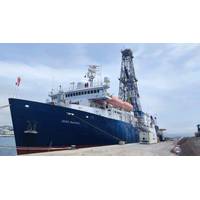
Mega Machine Deep Driller: JOIDES Resolution
Reykjanes Mantle Convection and Climate,” running from June 12 through August 12. The project has three main goals, the first of which is to determine how the V-Shaped Ridges (VSR) and V-Shaped Troughs (VST) in the area along the Reykjanes Ridge (the area of the Mid-Atlantic Ridge just south of Iceland) were formed. These distinctive ocean crust patterns stretch over hundreds of kilometers on the seabed and are thought to be shaped by the mantle plume under Iceland, which is formed by hot rocks rising from deep within the Earth’s interior. The second objective is to identify how the
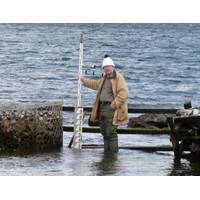
Obituary: Dr. David Thomas Pugh (1943-2022)
the challenges facing international marine science and IOC’s position within the UN system. The book nicely explained how governments use science to establish ocean policies in issues such as marine pollution, exploitation and hazards.David’s role in IOC took him to an international meeting Iceland in 2001 where he survived what could have been a serious car accident. He and a colleague (Trevor Guymer) were driving on an elevated road when the car somersaulted and finished on its roof. David had to make an ignominious exit through the rear window clutching a small but treasured suitcase that
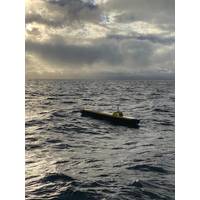
AutoNaut Completes a 16-week, 4,000-mile Mission on the Atlantic continental shelf break
Motus wave sensor, fitted internallySBE 49s CTD, loaned by UEA, fitted externally to the hull (depth not used)AirMar weather station, fitted to low bridgeThe original route plan was to be a 90-day deployment from SAMS in Oban, following the Extended Ellett Line out to Rockall and then north towards Iceland, before transiting west some way towards Greenland, with return to Oban. This changed as the start was delayed from May to August due to Covid impacting supply and resources. Also obtaining diplomatic clearance to collect data in the EEZ of other nations normally takes six months, and
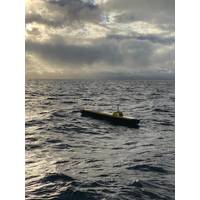
Case Study: Autonaut Put to the Test
Motus wave sensor, fitted internallySBE 49s CTD, loaned by UEA, fitted externally to the hull (depth not used)AirMar weather station, fitted to low bridgeThe original route plan was to be a 90-day deployment from SAMS in Oban, following the Extended Ellett Line out to Rockall and then north towards Iceland, before transiting west some way towards Greenland, with return to Oban. This changed as the start was delayed from May to August due to Covid impacting supply and resources. Also obtaining diplomatic clearance to collect data in the EEZ of other nations normally takes six months, and


 February 2025
February 2025





